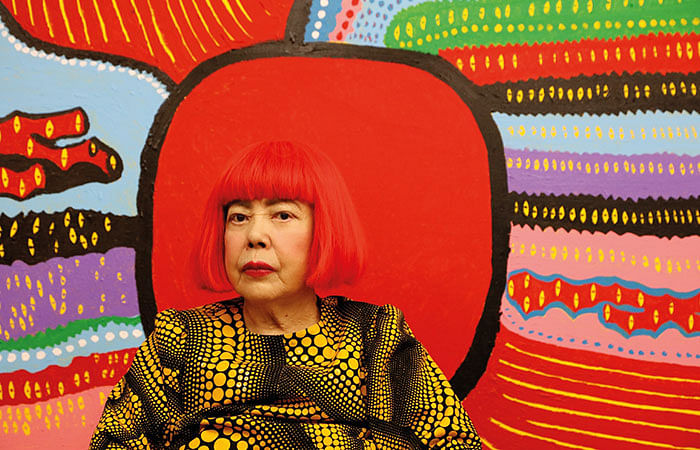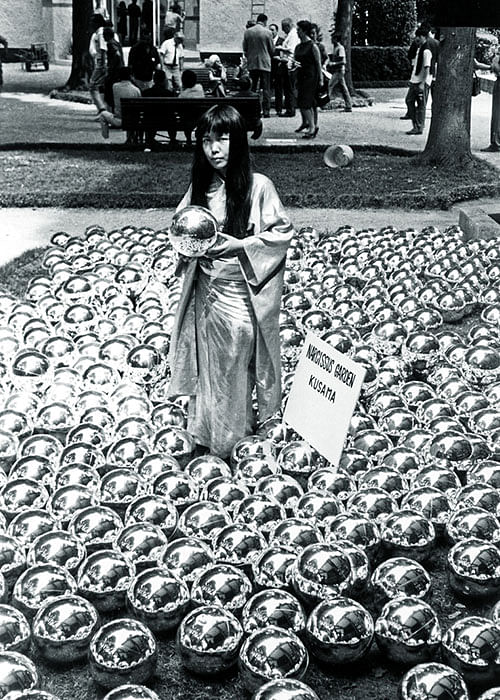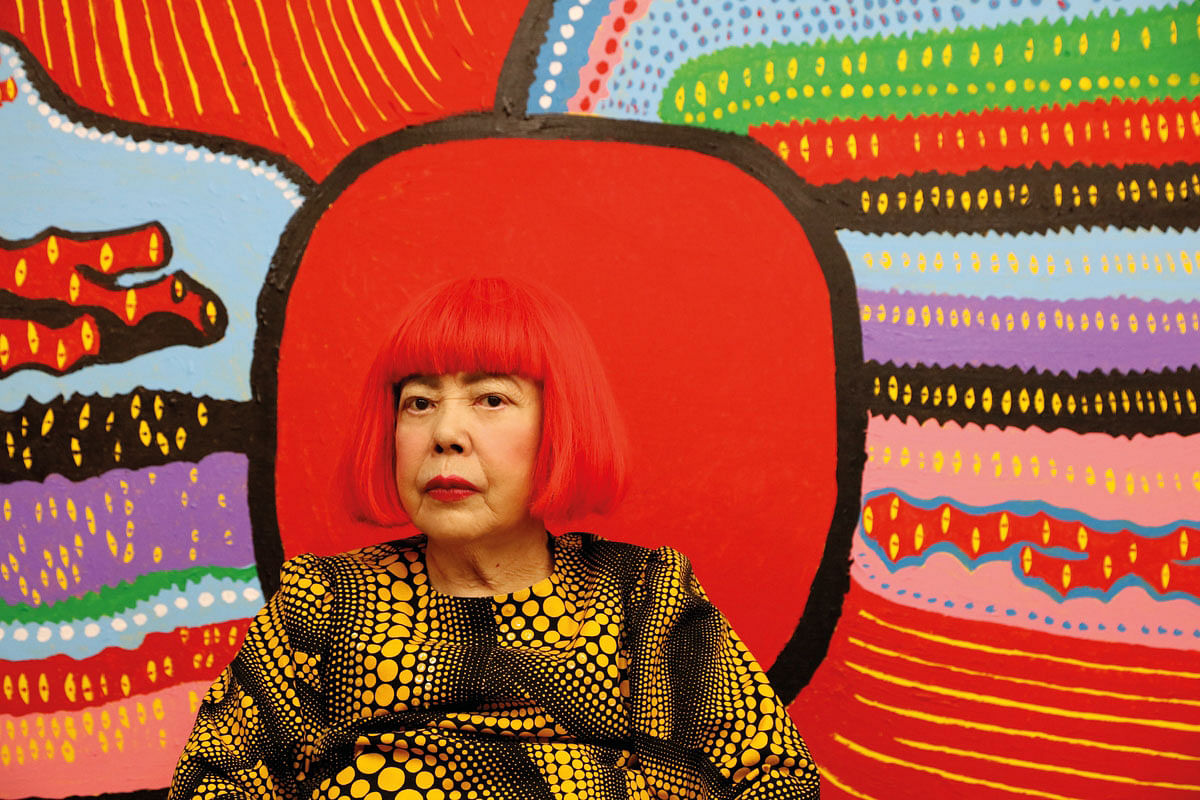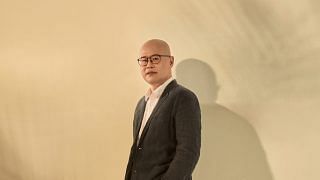[dropcap size=small]A[/dropcap]s they stepped into the studio, Adele Tan and Russell Storer were struck by a blizzard of bright colours on numerous pieces of canvas and the pungent smell of paint. Here was passion and dedication, they thought.
That was last December, and the pair had travelled to Tokyo to meet the 88-year-old woman who stood before them. She would have been mistaken for a convivial Japanese obasan if not for her neon red wig, polka dot dress and a team of assistants flanking her.
The woman is none other than Yayoi Kusama, and the studio is where she continues to paint, as she has been doing over the past decades.

“There’s this misunderstanding that her studio assistants do much of her painting – that’s not wholly true,” says Tan. “She does a lot of her work herself and she paints every day. There’s almost an immediacy when her hand hits the canvas.”
The meeting was a monumental one, not just for Tan and Storer, but also for the National Gallery Singapore. It was the first time that both curators of the National Gallery’s latest exhibition – Yayoi Kusama: Life Is The Heart Of A Rainbow – were meeting the artist and her team, since discussions started early last year.
Over 120 works will be showcased at the exhibition, in the first survey of her oeuvre in South-east Asia.
Kusama was excited to show the curators her latest works in her ongoing My Eternal Soul series, which would be exhibited for the first time at the National Gallery. These paintings are dominated by primal, child-like images similar to microbes and plants, and feature Kusama’s signature bright colour palette.

“Many artists work across media now, but Kusama pioneered it.”
– Adele Tan, curator
She dedicated one of the latest pieces, which the exhibition is named after, to celebrate the inaugural showcase in Singapore.
The exhibition will also delve into Kusama’s 60-year career. In addition to her dot paintings and infinity mirror rooms, which submerge visitors in a kaleidoscopic environment, sculptures and mixed media works will also be showcased.
There will also be a re-creation of her installation Narcissus Garden, a landscape of silver-mirrored plastic spheres. It gained notoriety when Kusama peddled each orb for US$2 (now S$21) to passers-by, during the installation’s debut at the 33rd Venice Biennale in 1966 – a move interpreted as a protest against the commercialisation of art.

(RELATED: 8 interesting facts about polka-dot queen, artist Yayoi Kusama.)
In Singapore, visitors will be encouraged to participate in Kusama’s works, such as plastering dots throughout the stark white Obliteration Room. Recently, the artist has sparked a new wave of interest. Her colourful and immersive works increasingly appeal to a generation obsessed with visuals and finding sensory experiences for social media.
When the Hirshhorn Museum in Washington, DC, featured Kusama’s works last month, for example, so many visitors wanted to snap photos of her infinity mirror rooms that a 30 second time limit had to be implemented as a crowd control measure.
Kusama’s continued popularity is also due, in part, to her refusal to limit her creativity to canvas.
“Many artists work across media now, but Kusama pioneered it,” says Tan. “People’s admiration (for her) has grown, because she forayed into fashion and popular culture.”
Her iconic polka dots – initially visual representations of her psychosis – became political statements against the Vietnam War. Now, they are featured in high fashion collections of brands like Louis Vuitton.
8 interesting facts about polka-dot queen, artist Yayoi Kusama
Her works resonate in the art market as well. Her painting White No.28, fetched US$7.1 million (S$10 million) at a 2014 auction, making her the most expensive living female artist.
As hugely famous as she has become, the doyenne remains unassuming. After each day of painting, she retreats across the street to the psychiatric hospital she has called home since 1977.
Of the exhibition, Tan says to best portray Kusama’s work is to make the exhibition “fun, enjoyable, immersive, and open to all”.
She adds: “Most people think of the National Gallery as a place that offers art history, telling people what to think about.
“I think this will be quite a refreshing gesture by the National Gallery. We want people to feel, and with the feeling comes thinking.”
Yayoi Kusama: Life Is The Heart Of A Rainbow will run at National Gallery Singapore from June 9 to Sept 3.
PHOTOS (Infinity Room, Kusama with artwork) Yayoi Kusama, courtesy of Ota Fine Arts, Tokyo/Singapore, Victoria Miro, London, David Zwirner, New York (Narcissus Garden) Collection of the artist Yayoi Kusama, courtesy of Yayoi Kusama Inc









